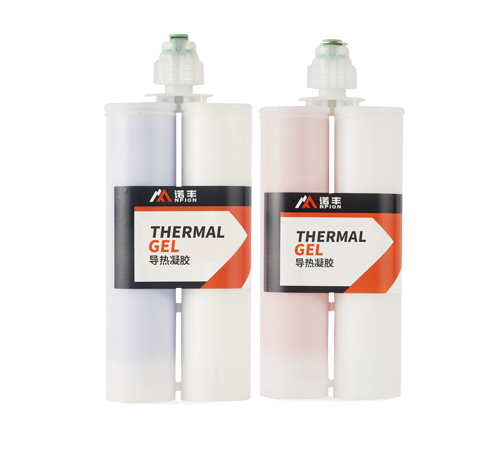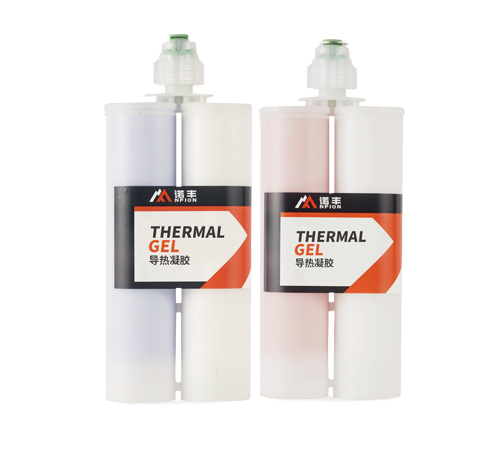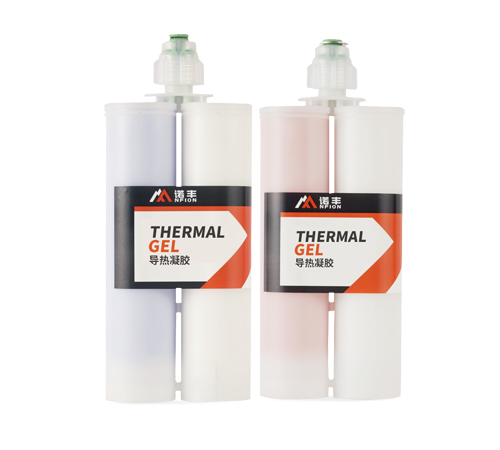Is Your Thermal Gel Still "Stringing"? Master These Tips for Perfect Application
Thermal gel, a crucial material in the thermal management of electronic devices, directly impacts equipment stability and lifespan. Yet, in real-world applications, we often face a frustrating issue: the stringing phenomenon of thermal gel. This not only affects dispensing efficiency and aesthetics but can also lead to uneven thermal interface distribution, reducing heat conduction efficiency. So, what causes stringing, and how can we effectively improve it?
Unpacking the "Behind-the-Scenes Players" in Stringing
To solve a problem, you first need to understand its roots. Thermal gel stringing is essentially when the material, after being subjected to shear or tensile force, fails to rapidly break or rearrange its molecular chains, forming "thread-like" connections. The reasons behind this are complex and varied, mainly including:
▪ Insufficient Thixotropy: Thermal gel usually has some thixotropy, meaning its viscosity drops under shear force and recovers when shearing stops. If the thixotropy isn't designed well, and the gel recovers too quickly after application, stringing is likely.
▪ Excessive Viscosity: Viscosity is key to a material's flow. When thermal gel's viscosity is too high, it needs more shear force to flow during application. Once that force is gone, the material's elastic rebound is pronounced, leading to stringing.
▪ Uneven Filler Dispersion: Thermal gels typically contain a lot of thermally conductive fillers (like aluminum oxide, boron nitride). If these fillers are unevenly dispersed in the base material, forming clumps, they create stress concentration points during application, making stringing more probable.
▪ Crosslinking Density or Curing Degree: For thermal gels that need curing, if the curing degree or crosslinking density is too high, the material becomes "harder," losing crucial flexibility, and thus strings when force is applied.
▪ Improper Dispensing Process Parameters: Dispensing speed, pressure, and the design of the dispensing needle or scraper all directly affect how the thermal gel is stressed at the interface, influencing stringing. For example, too fast a dispensing speed might not give the material enough time to level out.
▪ Material Surface Tension and Interfacial Wettability: The compatibility of the thermal gel's surface tension with the contact interface also affects how it spreads and levels. Poor wettability means the gel won't spread quickly after application, which can also worsen stringing.
"Brainstormed" Solutions to Improve Stringing
Now that we understand the causes, we can tackle the problem head-on. Improving thermal gel stringing requires a comprehensive approach, optimizing from material design and production processes to application steps.
1. Material Formulation Optimization: Getting to the Source
▪ Adjusting Thixotropic Agent Type and Amount: Pick the right thixotropic agents and precisely control their amount to get ideal thixotropy. The goal is for the gel to thin out quickly under shear but recover viscosity fast when static, without recovering too fast, giving the material time to level.
▪ Optimizing Filler Dispersion: Use advanced mixing and dispersion techniques, like planetary mixing or three-roll milling, to ensure thermally conductive fillers are evenly spread in the base material, preventing clumps. Also, surface-treating fillers (e.g., with silane coupling agents) can improve their compatibility with the base material, boosting dispersion even more.
▪ Controlling Polymer Molecular Weight and Structure: Adjusting the molecular weight distribution and chain structure of the base polymer can change the gel's viscoelastic properties. For instance, adding appropriate branching structures or adjusting crosslinking points can reduce the material's elastic rebound under shear while keeping its thermal conductivity.
▪ Careful Selection of Plasticizers or Diluents: Without hurting thermal conductivity or long-term stability, adding suitable amounts of plasticizers or reactive diluents that are compatible with the base material can effectively lower the gel's initial viscosity and improve its flow.
▪ Optimizing the Curing System: For thermal gels that need curing, precisely control the type and amount of curing agent, along with curing temperature and time. This ensures the cured material meets performance demands while staying flexible enough to avoid stringing from being too hard.
2. Production Process and Equipment Upgrades: Aiming for Excellence
▪ Improving Mixing and Dispersion Processes: Use more efficient vacuum mixing equipment to prevent air bubbles during material mixing and ensure thorough, uniform dispersion.
▪ Strict Control of the Production Environment: Factors like temperature and humidity affect the gel's viscosity and stability, so tightly control the environmental parameters in the production workshop.
▪ Boosting Production Automation: Using automated production lines can significantly reduce human interference, ensuring consistent product quality.
3. Dispensing Process Optimization: Blending Tech and Experience
▪ Adjusting Dispensing Speed and Pressure: For different thermal gel viscosities, you'll need to find the best dispensing speed and pressure through testing. Generally, a slightly slower dispensing speed gives the gel more time to level; adjusting pressure correctly ensures even material extrusion.
▪ Optimizing Dispensing Needle/Scraper Design: Choosing a dispensing needle with the right orifice or a scraper with the right angle can effectively improve how the gel shears during extrusion, reducing stringing. For example, the smoothness of the dispensing needle's inner wall and its taper can matter.
▪ Preheating Treatment: For some higher viscosity thermal gels, consider gently preheating the gel to lower its viscosity and improve dispensing performance. But be careful with temperature to avoid affecting material properties or accelerating curing.
▪ Improving the Dispensing Environment: Make sure the dispensing area is clean to keep dust or other impurities out of the gel, as they could impact its fluidity and uniformity.
Conclusion
Improving thermal gel stringing is a systematic undertaking, spanning materials science, rheology, and engineering applications. By fine-tuning material formulation, strictly controlling production processes, and continuously optimizing dispensing techniques, we can significantly reduce or even eliminate stringing. This enhances the uniformity and reliability of the thermal interface, ultimately providing stronger assurance for the stable and efficient operation of electronic devices.
In practice, engineers and R&D staff need to flexibly apply these strategies based on specific thermal gel characteristics, application scenarios, and equipment needs. They should also conduct repeated trials and validations to find the most suitable solution. Only then can we truly overcome this "small problem" of stringing and achieve a "big improvement" in heat dissipation efficiency.
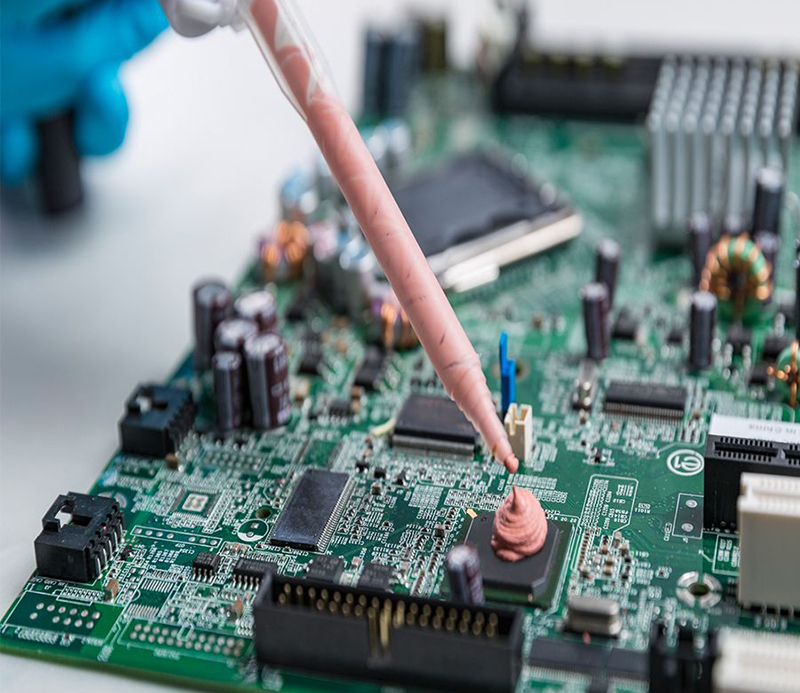
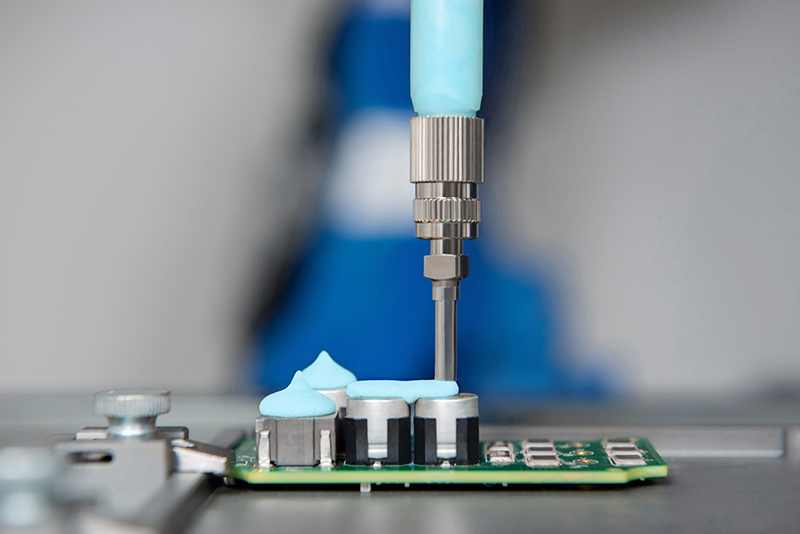
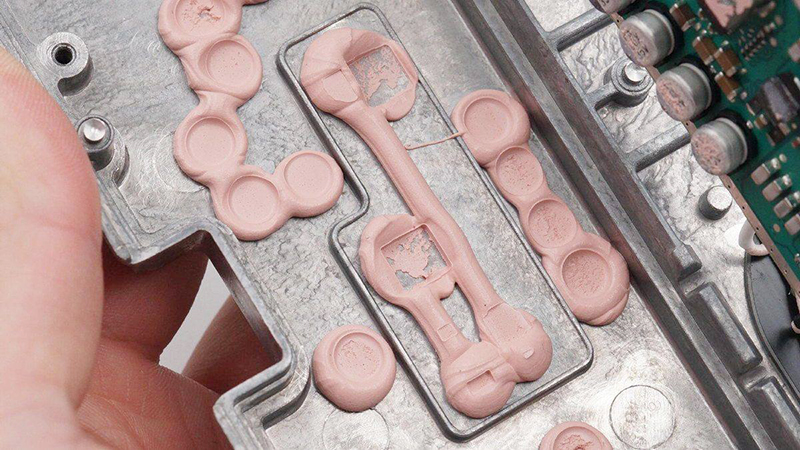
 CN >
CN >
